Stock or equity research reports are excellent resources to equip traders and investors with robust knowledge of trading and investment. A research report is a detailed analysis in a report form prepared by an analyst. It provides an overview of business, industry dynamics and the financial performance of a company, together with the risks involved, based on which the analyst makes a recommendation. Understanding how to analyse research reports can prove to be fruitful while investing or trading.
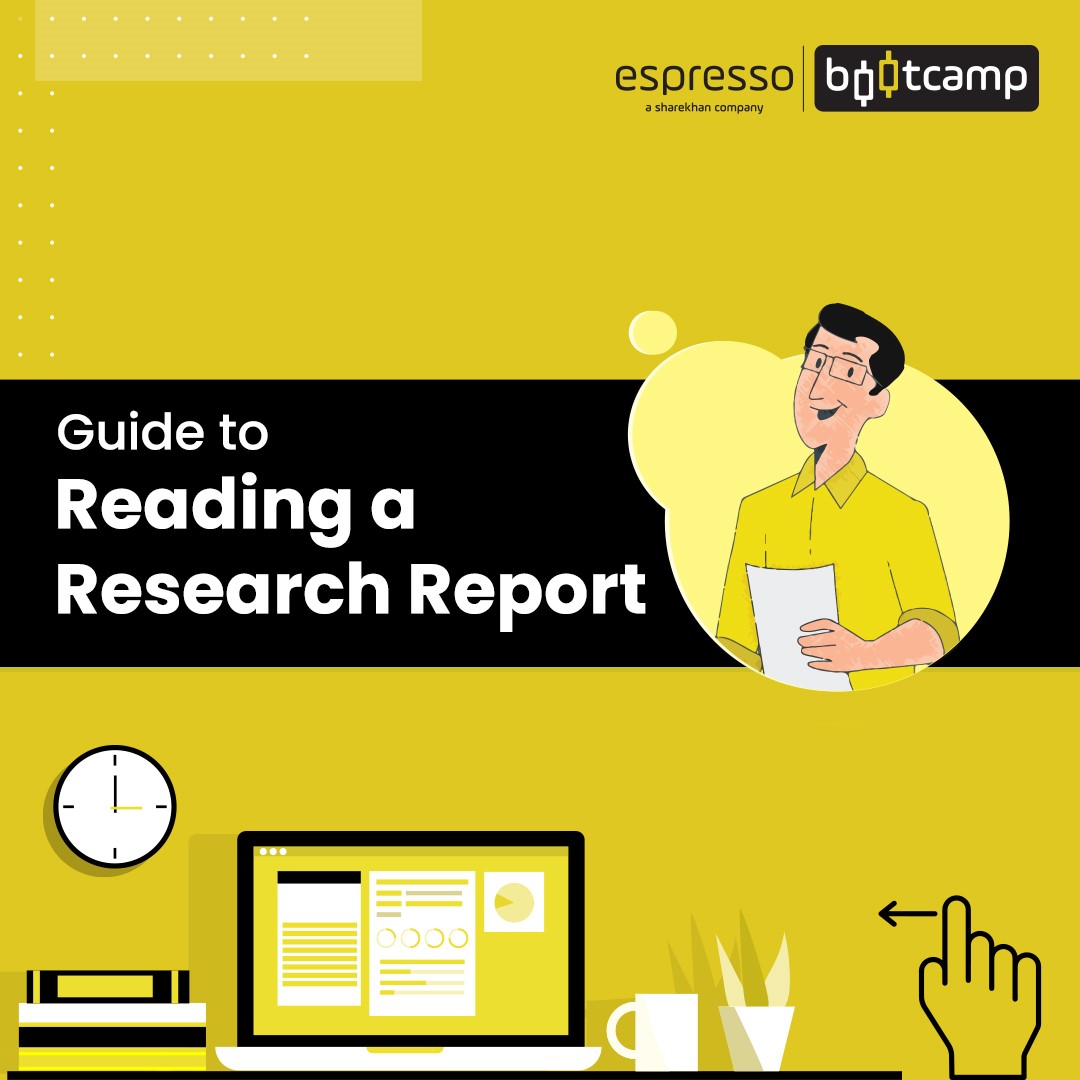
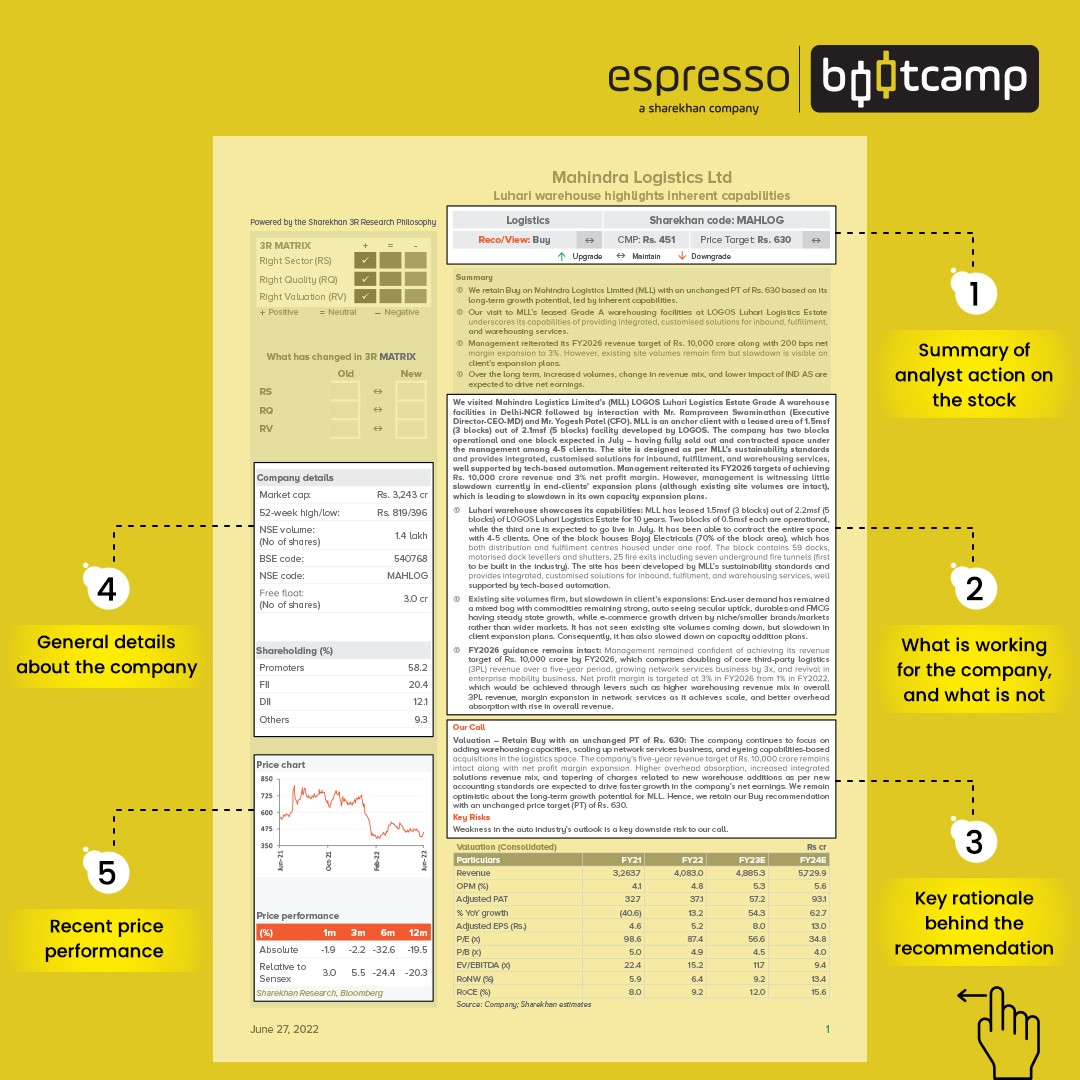
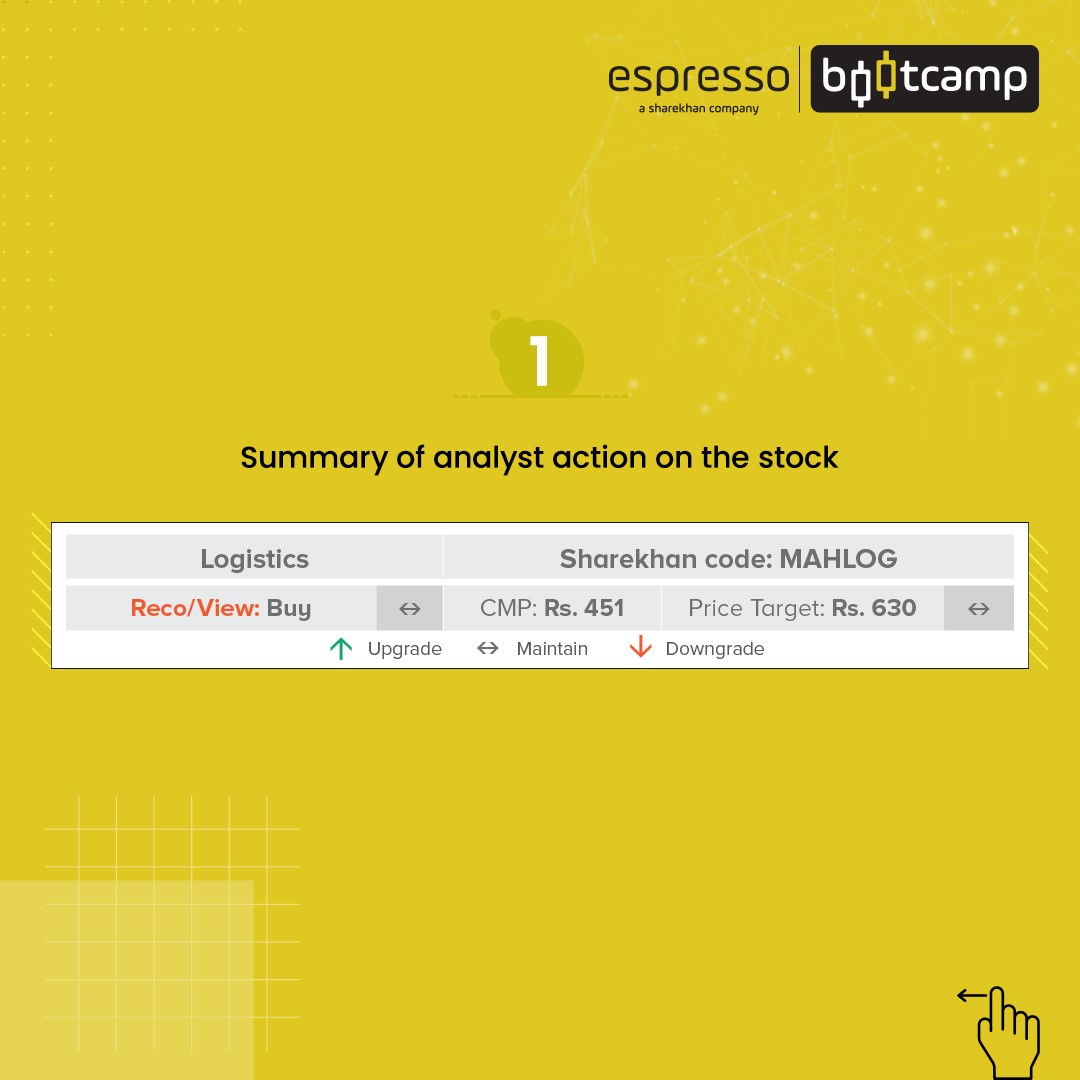
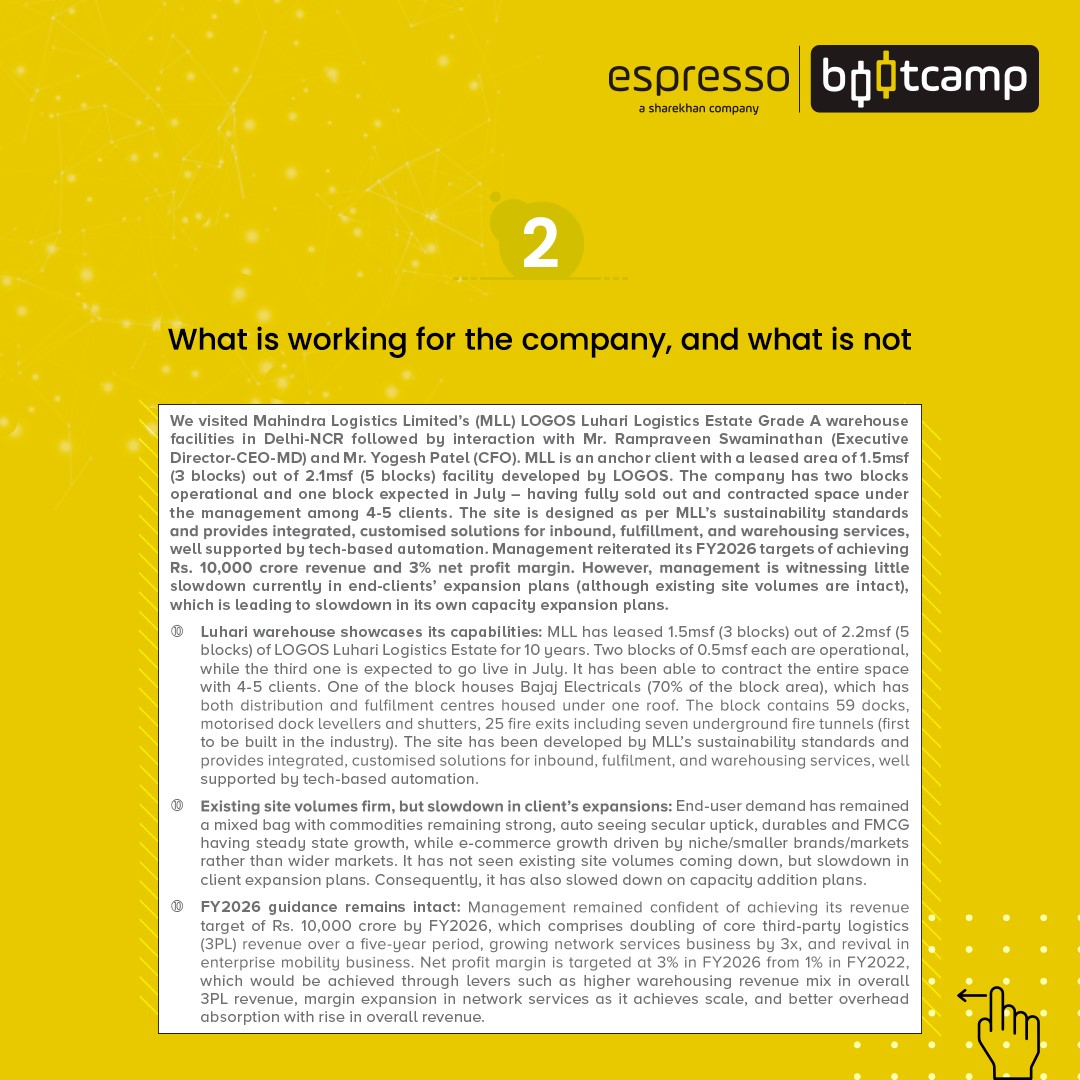
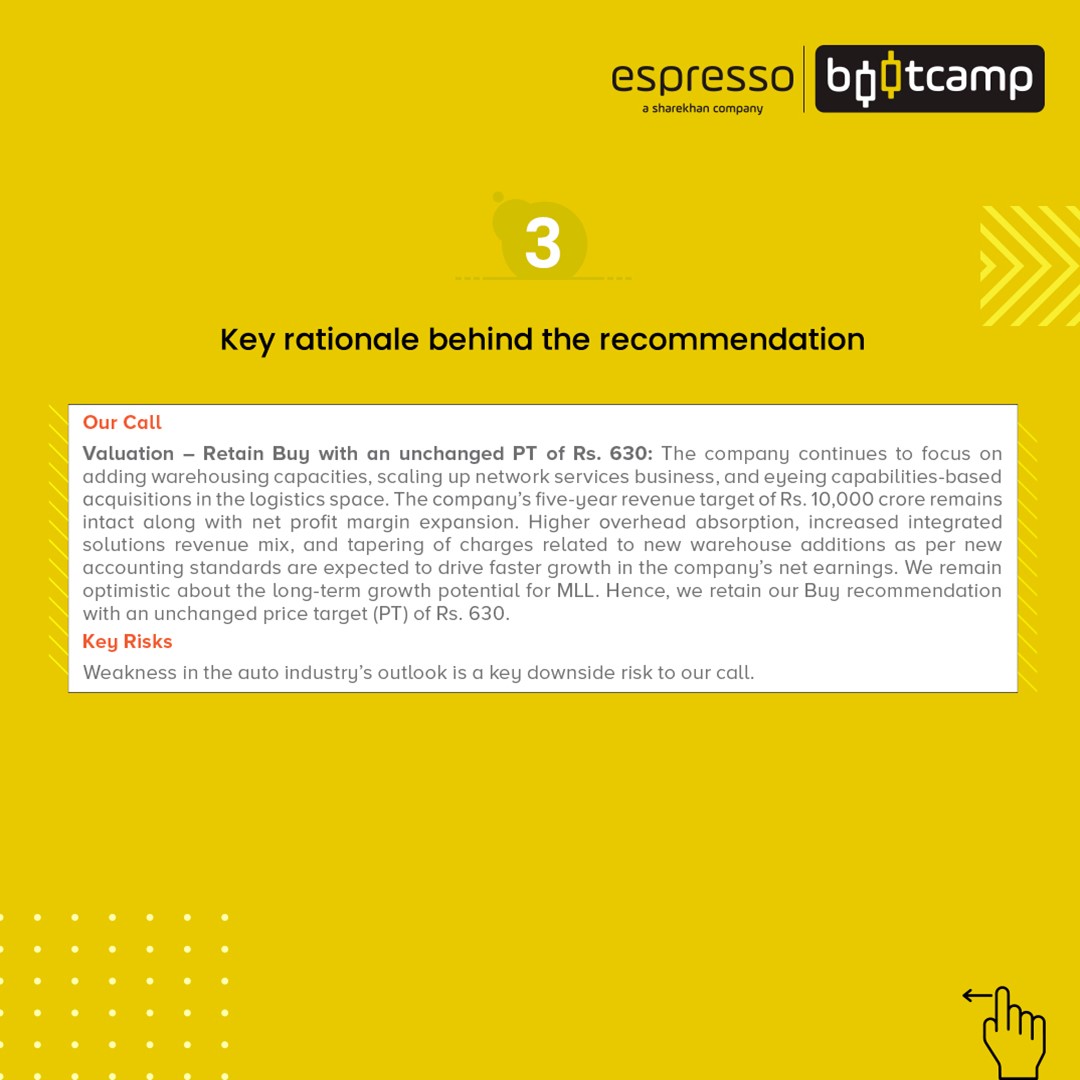
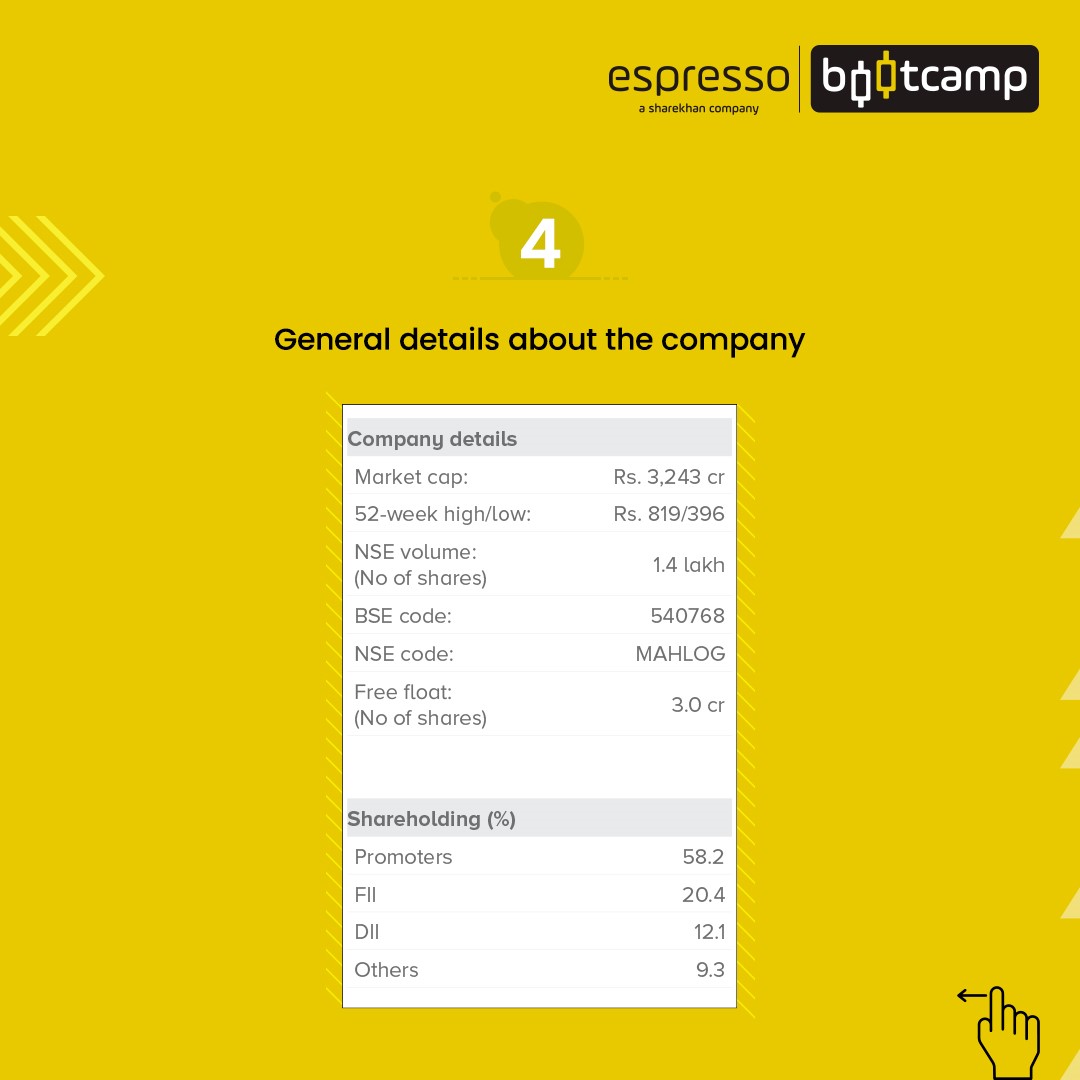

Research reports are prepared by analysts of brokerage and fund houses. Those made by the brokerages are sell-side reports, and those made by fund houses are buy-side reports. Buy-side fund houses are clients of the sell-side and use the report along with their research for their investment decisions. Buy-side reports are used internally by fund houses and are not available for public view. Brokerage houses have research teams catering to different categories of clients, such as fund houses, banks, high-net-worth individuals, private client groups, retail clients, etc.
Types of research reports
- Initiating a coverage report where a new stock idea is released
- Sectoral report that covers updates of a sector
- Economy report discusses key economic indicators such as inflation, gross domestic product (GDP), interest rate, index of industrial production (IIP)
- Quarterly results report updates on the quarterly performance of the companies released at the end of each quarter
- Special reports are released when some extraordinary events throw investment opportunities. The events can be both positive and negative, pertaining to new formulas or inventions, buybacks, hive-offs, mergers and acquisitions, key personnel resignations, strikes, etc., that will have implications on stock prices
Purpose of research reports
Wondering what purpose research reports serve and how to analyse research reports? The main purpose is to provide investors with a recommendation and rating on a particular company based on a detailed analysis of the business and financial position of the company. Based on their investment thesis, the analyst arrives at the intrinsic or fair value of a company, which may be higher or lower than the current market price. Also known as target price, fair value helps investors to make investment decisions. The report also informs the investors about the risk and concerns involved in the investment.
Types of ratings and recommendations
Recommendations and ratings are used interchangeably. For convenience and readability, we will use ratings in this section. Here are the different types of ratings and how to read research reports:
Buy rating: It means that the analyst expects the stock to move higher in the short or medium-term due to some near-term positive triggers. There are variants of the buy ratings:
- Strong buy is a rating where the analyst believes that there are very strong triggers and the stock can move substantially in the near term
- Outperform is a rating when an analyst believes that the stock may outperform a benchmark index or the overall market, or other companies in the industry. The other forms of rating of outperforming are overweight, accumulate, add or moderate buy.
Sell rating: It implies that the analyst expects the stock to fall in short to medium term. The analyst recommends a sell rating to a stock, usually taking into consideration near-term challenges for a company. The other variant of sell recommendations are:
- Strong sell is a rating where the stock will fall significantly below its current price, and one should exit
- Underperform is a rating where the stock is expected to underperform a benchmark or an index, or other companies in the industry. The other forms of underperformance are underweight, moderate sell and weak-hold
Hold rating: This is a rating where the analyst expects the stock to perform in line with the market or stocks within the industry. It is a rating that suggests that the stock should be avoided for both buying or selling. The variants of this rating are:
- Neutral- It is a rating that is neither negative nor positive.
- Equal- It is a rating where the analyst expects the stock to be equal to the average returns of other stocks within the sector.
Rating upgrades and downgrades
Stock ratings assigned by brokerages can keep changing based on variables of the business and the financial performance of the company. An analyst changes ratings for a particular stock based on the current set of data and their interaction with management and other external stakeholders. This change can be positive, necessitating a rating upgrade, or a negative one, requiring a downgrade or a no change in rating. So how do you analyse research? Here's how the ratings look.
- Upgrade: A rating upgrade implies the analyst has changed their ratings either from hold to buy or sell to hold or sell to buy. An upgrade indicates a positive view of the company’s prospects in the near to medium term.
- Downgrade: A rating downgrade implies the analyst has changed their ratings from hold to sell, or buy to hold or buy to sell, indicating a near-term negative variable impacting the company in the near to medium term.
- No change: An analyst can also maintain the status quo, i.e., no change, meaning the current data and interaction have not resulted in any upgrade or downgrade.
Contents of a research report - where to look for what
The contents of the research report can vary in form but remain more or less the same. The broad structure and contents of a report are as below:
Visual content
- Data: in tabular form that appears on the first page of the report
- Company details: Company name and sector
- Stock recommendation: Stock recommendation, current market price, target price and rating changes
- Company’s market data: Market capitalisation, volumes in exchanges, BSE, NSE or Bloomberg code, the free float of shares, 52-week high and low, among others
- Brief financial snapshot, ratios, valuations: Key financial indicators, ratios and valuation summary
- Shareholding pattern: Broad shareholding patterns such as promoter holding, FII holdings, fundholding, public holding, etc.
- Stock performance chart: Stock performance vis-a-vis the benchmark index
Analytical content
- Investment thesis and valuation summary: This contains a brief on investment thesis and valuation summary. This section will only bullet point the variables that support the investment argument.
- Company background: This contains a brief background of the company and its business segments. It may also contain the sector dynamics and how the company is placed in the sector.
- Detailed investment thesis: It brings out the variables contributing to the company’s performance or non-performance in short to medium term
- Risks and concerns: The risks and concerns associated with the investment thesis are discussed in this section.
- Detailed financial information and valuations: Historical and projected profit & loss account, balance sheet, cash flow statements along with key ratios form part of this section. The valuation method is used to arrive at the intrinsic value or the target price forming a part of this section.
- Disclaimer: This section contains the general disclosure that the view expressed is personal, and the distribution of the report is solely for the person it is meant for and not for the public. It also contains that the report does not constitute an offer for the purchase or sale of any financial information and must not be reproduced to redistributed.
Keys to reading research reports
- While no one misses the recommendations, one has to read the reasons for the change in rating given by the analyst. The change in rating may be temporary, or it can be far-reaching.
- The investment thesis is the most important part of the report and must be read and understood before investing. One should also make additional efforts to read more about the recent news and developments about the company available in the public domain before forming a decision to invest.
- The risks and concerns of the investment thesis are a must-read and should not be ignored. They can be short or medium-term and need to be looked into before making an investment decision.
- Valuation method is another point that has to be carefully examined. The method and reason for adopting the valuation are to be understood.
Points to remember
- Research reports are informative and useful for investment decisions
- You will need to do your homework to supplement the research report
 0
|
0
|
 0
0
 Modules
Modules

 Watch
Watch 
